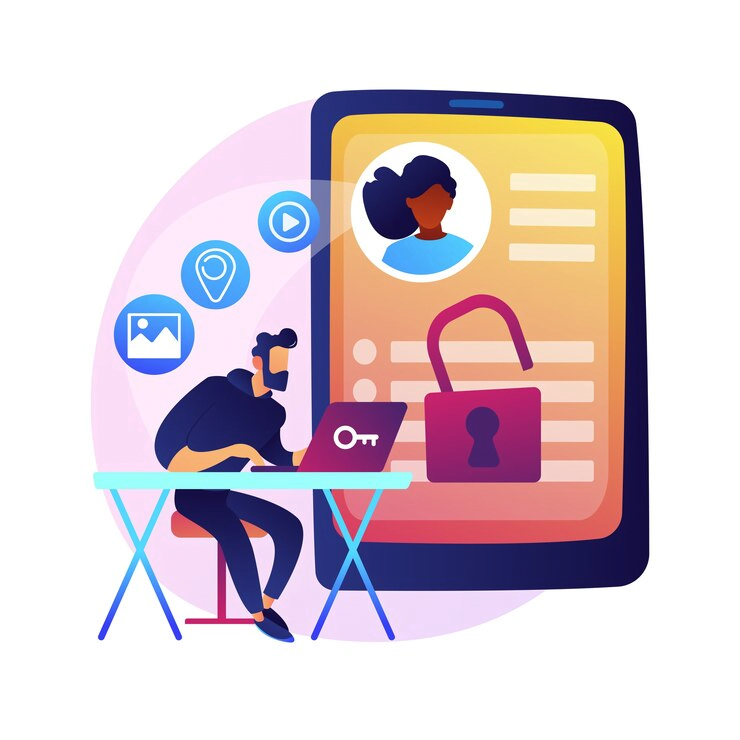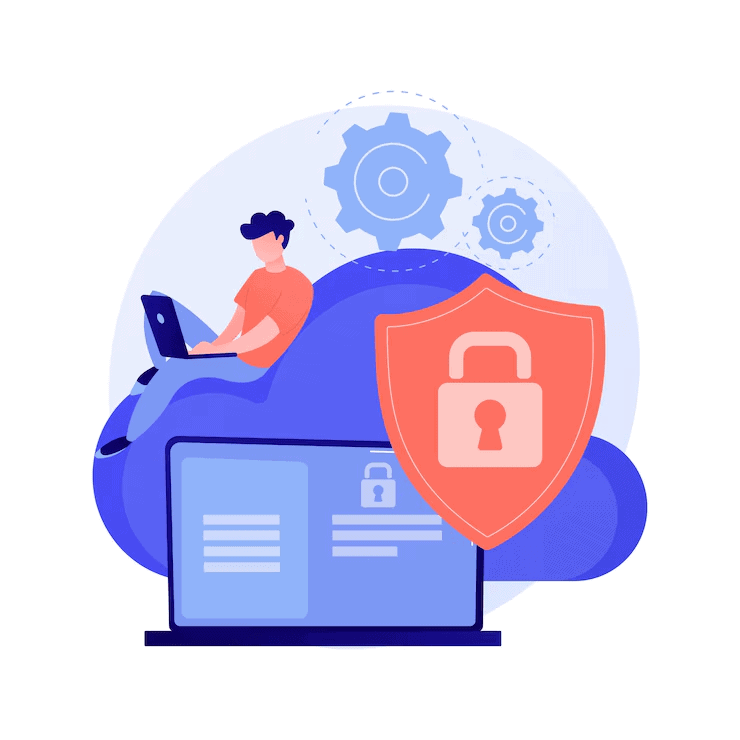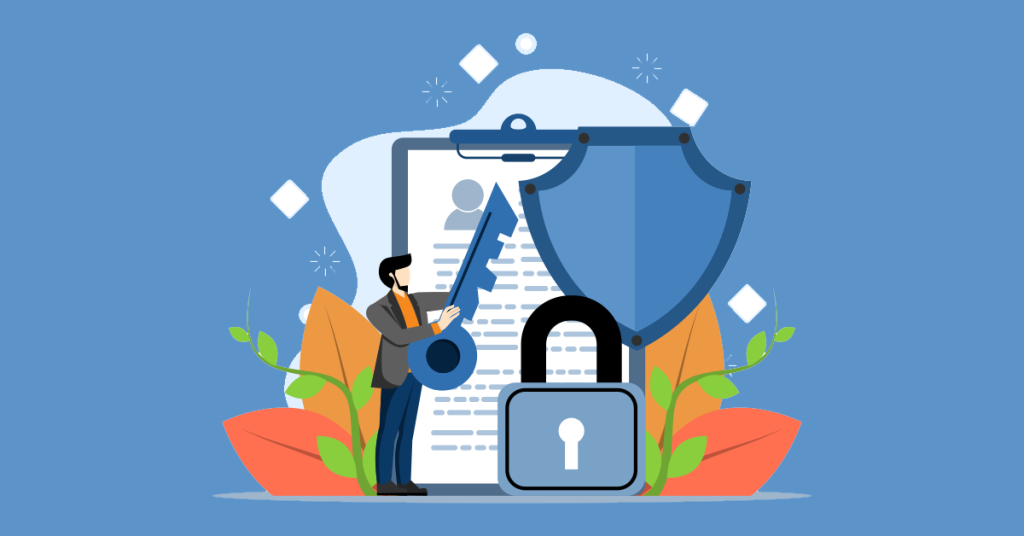Social media, in our connected world, has become vital for chatting, sharing news, and mixing with others. Yet, with its growth, worries about privacy and safety also increase. It is key for users to watch out for their personal info and keep their security intact while getting the perks of social media. This piece locks onto the top tips to keep your data safe on social media, tackling points from simple account safety to complex privacy configurations.

Grasping the Dangers
Before learning how to be safer online, you need to grasp the risks linked with social media usage:
- Data Leaks: Hacks or leaks could reveal your personal info.
- Identity Fraud: Thieves may use your details to pretend to be you.
- Phishing Frauds: Deceptive bids to gain private data, pretending to be legit sources.
- Malware or Viruses: Bad software can spread via malicious links or downloads.
- Sneaky Tricks: Trickery to fool folks into sharing private information.
Top Guidelines for Securing Your Data
Fortifying Account Protection
- Generate Strong, Individualistic Passwords: Formulate intricate passwords with a blend of alphabets, digits, and unusual symbols. Steer clear from predictable data such as birthdays or widespread words. You may find it helpful to adopt a password manager to recall different passwords for each account.
- Swap Passwords Regularly: Your passwords need a refresh now and then to cut down on the chance of account breaches. If a service tells you they have had a data leak, update your password straight away.
- Turn On Two-Factor Authentication (2FA): 2FA gives you bonus security by asking for a second check, like a code pinged to your phone, on top of your password. This ramp up security, making it tougher for the wrong folks to get into your account.
- Check on Your Account Routinely: Scour your account regularly for strange goings-on, like odd logins or data changes. Most services give a record of when and where you have logged in before.
How to Handle Privacy Settings
- Personalize your Privacy Settings: Check and fine-tune the privacy settings on each social media site to manage who sees your posts, reaches out to you and locates your profile. Default settings generally favor visibility over privacy.
- Manage Tagging and Mentions: Modify settings to scrutinize tags and mentions before they show on your profile. This prevents undesirable ties with possibly damaging content.
- Be Careful with Information Sharing: Think twice before you divulge personal information online. Refrain from disclosing delicate data like your residence, phone number, and bank details.
- Make Your Profiles Private: If feasible, switch your profiles to private. This way, only approved friends or followers can view your content. It lessens the possibility of unknown people getting your information.
Being Cautious with External Links and Applications
- Keep Away from Doubtful Links: Never engages with links coming from questionable or unverified sources. They might direct you to phishing sites or cause malware downloads.
- Think Carefully Before Using Third-Party Apps: Stick to using applications and services that have been proven trustworthy. A lot of third-party applications demand broad permissions, which might risk your data. Social media aggregator apps will often ask you to connect your Facebook, LinkedIn, Instagram, YouTube or Twitter accounts. Always make sure that they are secure and use official APIs.
- Remove Unneeded App Permissions: Make it a habit to check and withdraw permissions for apps you have stopped using or those demanding too much access to your data.
Learn and Teach Others
- Know Common Scams: Understand usual social media scams, like phishing, sham giveaways, or mimicry. Gain knowledge about how to spot and dodge these risks.
- Spread the Word: Motivate friends and relatives to embrace secure practices. Awareness among all enhances a safer internet space for all.
Boosting Security Steps
- Leverage VPNs (Virtual Private Networks): VPNs fortify your internet link by scrambling it, making data interception by outsiders more difficult, especially on public Wi-Fi.
- Frequent Software Refreshes: Keep your gadgets and applications armed with the newest security amendments. Out-of-date software can possess weak points that hackers can manipulate.

- Guard Your Gadgets: Deploy robust passwords or biometric safety for your tools. Turn on remote erasing to guard your data if your tool goes missing or gets swiped.
- Store Key Data: Systematically store critical facts in secure data hideouts. If your account gets breached or data gets lost, you can retrieve your facts.
- Hire a Risk management and Cybersecurity Consultancy: Hiring an external Information Security consultancy will give you a fresh take on your data privacy risks. Plus, they’ll be able to provide you with recommendations and training for your employees so you avoid any potential issues in the future too.
Advice for Certain Platforms
- Your Details: Show only needed personal info on your profile. Change settings so only pals or special groups see your details.
- Friending: Be picky when adding new friends. Fraudsters make false accounts to get personal details.
- Timeline and Tags: Use the check feature to decide what shows on your timeline and who can tag you in updates.
- Action Log: Look at your action log often. It helps you watch your involvement and handle who sees your posts and activities.
- Private Tweets: Make your account private. This way, only followers you approve can see your tweets, keeping your thoughts and info safe from strangers.
- Filtered Messages: Restrict who can message you directly. This helps decrease unwanted messages.
- Extra Security: Turn on 2FA. It is an added safety net for your account.
- Hashtag Smarts: When you use famous hashtags, more people see your tweets. This includes the bad guys too. So use them wisely.
- Your Account: Make your account private. This lets you pick your followers and who sees your posts.
- Stories: Edit story settings. This helps choose who can see and respond to your stories.
- Comments: Handle your comments. Block or filter comments to keep spam and rude responses away.
- Apps: Watch out for third-party apps. Only use apps you trust that ask to link to your Instagram. Check these permissions often.
- Profile Visibility: Make your profile available only to some. Check your visibility by using “View as”. See how others see you.
- Connection Requests: Say yes just to the connections from someone you trust. LinkedIn can have scams.
- Data Export: Get your LinkedIn data regularly. Keep an eye on your info and have a backup.
- Job Seeking Preferences: Control who knows you’re job hunting with LinkedIn Tips . Keep it a secret, especially from your boss.
How Social Media Platforms Play a Part
Steps towards data safety are not just for users. Social Media platforms have a crucial part in assuring user privacy and security. Facebook, Twitter, Instagram, and LinkedIn, as examples, need to consistently update their safety and privacy protocols to tackle new threats. Navigating how these sites can help create a safer online space:
- Frequent Security Updates and Fixes: New security features and vulnerability repairs should be a constant effort from social media platforms. This includes patch releases to fix known security problems. Users keep informed about these changes and use them promptly to get the newest protections.
- Better Privacy Choices: Powerful platforms should give detailed privacy options. Users should manage their online identity, like seeing their posts, messages, and personal data. Easy privacy settings could make more people use them.
- Honest Data Usage: Social media should be clear about their data collection, usage, and sharing. Simple, easy-to-understand privacy policies help users grasp how their data is used and choose privacy settings wisely.
- Early Danger Spotting: The use of complex calculations and AI can find and reduce risks instantly. AI can spot odd activities, such as loads of friend requests, strange login tries, and dangerous links, and act right away.
- Teaching Users and Giving Help: Platforms should teach users about privacy and safety rules of thumb. They can do this with how-to guides, FAQs, and quick customer service. Giving users knowledge is a great way to boost total safety.
How to Act Online Correctly
Checking Facts
- Review Before Posting: In a time where false info is common, making sure information is genuine before posting it online is vital. Wrong info can travel fast and may cause problems.
- Trust Reliable Sources: Stick to respected news providers and official outlets for details. Do not share unproven stories or rumors that might add to misinformation.
- Flag False Info: Most online spaces offer options to report bogus news or misleading details. Use these options to uphold the quality of the info circulating on social media.
Interacting with Unknown Users
- Stay Alert: It is crucial to be careful while interacting with users who aren’t familiar to you. People with harmful intentions often exploit social platforms to trap innocent people.
- Protect Your Personal Information: It’s better not to reveal personal information in public posts or direct messages, specifically with those you don’t know. Misuse of such sensitive details is a common threat.
- Understand and Avoid Negative Engagement: Be aware, social platforms can often become a playground for trolls and unnecessary disputes. Acknowledge these negative activities and steer clear from those who aim to provoke or trouble you.
Boosting Safety with Tech Steps
Upgraded Account Safeguards
- Biometric Defense: Take advantage of biometric defenses, such as fingerprint or face identification, if your gadget offers it. They provide sturdy defense besides passwords.
- Protection Questions: Opt for safety questions with answers that are not easily traced on your social media accounts. Eschew questions with answers that could be speculated or searched.
- Frequent Safety Checks: Carry out regular check-ups on your account settings and permissions. Make sure that only required access is given and delete permissions for any third-party apps that are not needed anymore.
Privacy and Safe Conversation
- Complete Protection: Choose chat networks with total encryption. It warrants messages are exchanged between only you and the chosen partner.
- Safe Surfing: Turn on HTTPS in your browser for safe chat between your gadget and sites. Skip public Wi-Fi for significant dealings unless there is a VPN.
- File Shielding: Shield critical files and stored data. Adding encryption bolsters safety, guard your information even if it is nabbed by the wrong person.
Mastering Private Browse Modes
Secret Surfing
- Try Private-based Browsers: Websites such as Tor give you secret surfing tools, making sure you stay private on the net.
- Hidden Email Accounts: Try using hidden or one-use email accounts when joining fresh services or platforms. This helps lessen how much your online actions can be traced.
- False Names: Think about using false names for social media accounts where staying unknown is key. This is a good way to keep your real identity safe.
Less is More With Data
- Only What’s Needed: When signing up for things, only give out info that is really needed. Sharing less keeps you safer.
- Standalone Accounts: Keep your social media accounts separate from other services if you can. This keeps your private details from spreading over many platforms.
What Comes Next for Social Media: Safety and Privacy
As internet society matures, we will face evolving privacy and safety hurdles. Innovations like artificial intelligence, machine learning, and the Internet of Things (IoT) will bring fresh hazards and call for original solutions.
AI’s Role in Privacy
- AI’s Watchful Eye: Social media platforms are starting to use AI and Social Media Tools more to watch and control content. This could improve safety, but heightens worries over privacy and watching. Support clear AI rules.
- Tailored Interactions: AI-backed customization can better user experiences but often needs vast amounts of collected data. Weigh the benefits of personalization against privacy needs.
The World of Blockchain
- Thinking Decentralized: You have got Blockchain, a tool that might let social networks be more centered around users. Comes with the promise of data control. Dive in, get behind new platforms.

- Safety Boost: Good news – Blockchain comes with built-in safety perks. Might well be a strong shield for users’ information. Stay in the loop on how this tech could up our privacy game.
Final Thoughts on Privacy and Security on Social Media
Keeping your social media data safe means you have got to be alert, savvy, and proactive. Use strong passwords. Set up two-step verification. Be smart with privacy settings. Carefully pick the third-party apps and weblinks you trust. This can boost your safety online big time. Also, learning about common scams and privacy risks, as well as social media platforms’ privacy policies, helps you stay safe. As technology advances, it is vital you know about new risks and security updates. All told these actions let you enjoy social media perks while your personal data stays safe and secure.

